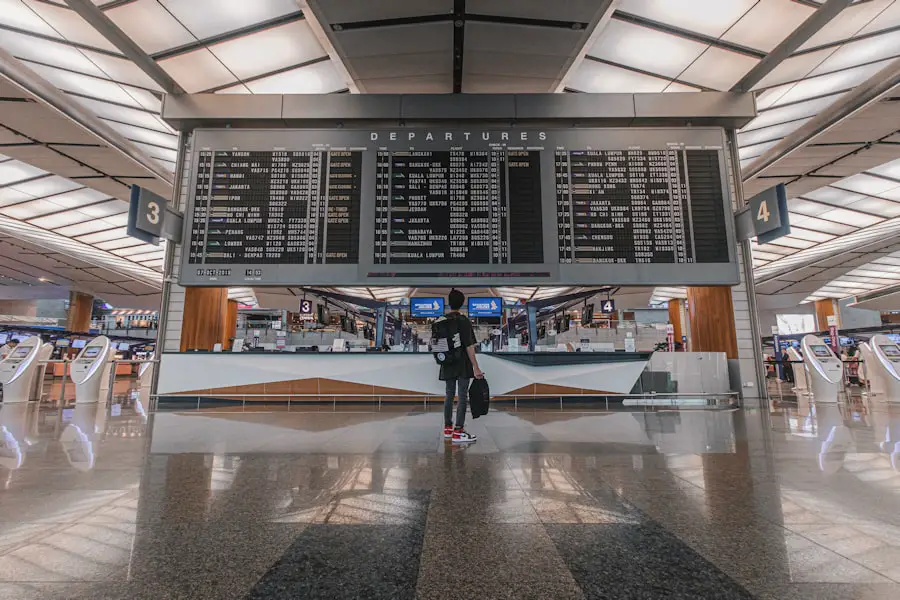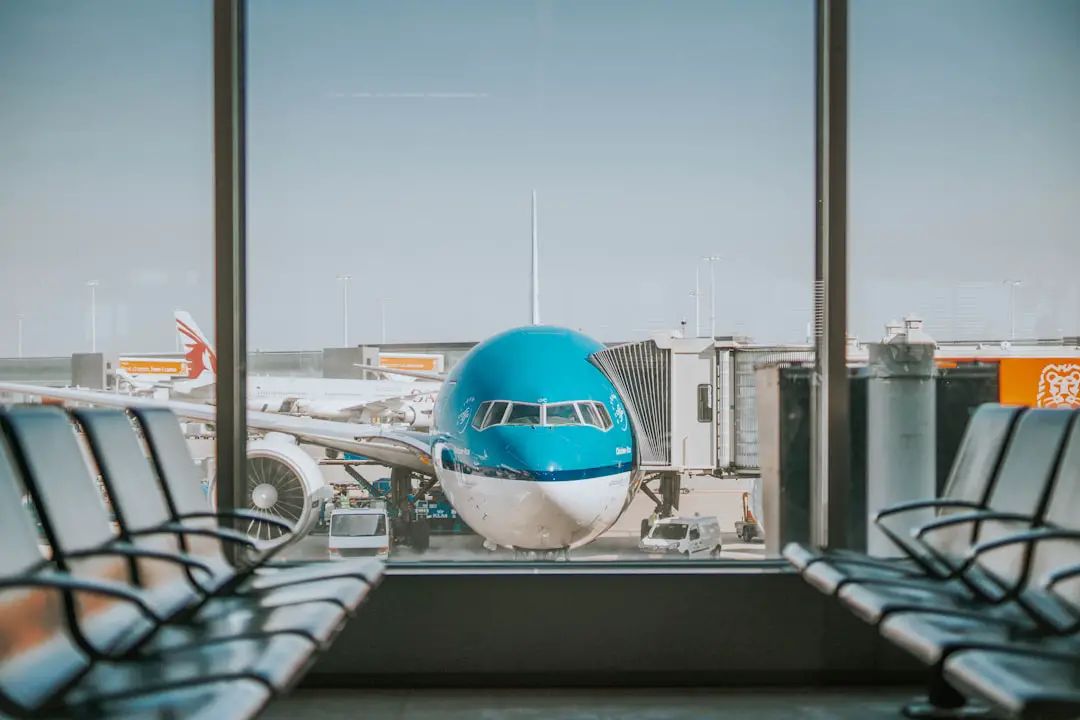American Airlines, one of the largest airlines in the world, operates an extensive network that connects millions of passengers to various destinations across the globe. The airline’s terminal locations play a crucial role in its operations, serving as vital hubs for both domestic and international travel. Understanding the layout and location of these terminals can significantly enhance the travel experience, allowing passengers to navigate their journeys with greater ease and efficiency.
With a focus on major airports and their respective terminals, this article delves into the intricacies of American Airlines’ terminal locations, providing insights into accessibility, amenities, and tips for travelers. The significance of terminal locations extends beyond mere geography; they are pivotal in determining flight connections, layover times, and overall passenger convenience. American Airlines has strategically positioned its terminals in key cities, ensuring that travelers have access to a wide range of services and facilities.
This article will explore the major hubs and terminals operated by American Airlines, highlighting their locations within the United States and the amenities available to passengers. By understanding these aspects, travelers can better prepare for their journeys and make informed decisions about their travel plans.
Key Takeaways
- American Airlines operates out of multiple terminals in major airports across the United States, including its major hubs in Dallas/Fort Worth, Charlotte, Miami, Chicago O’Hare, and Philadelphia.
- The location of American Airlines terminals varies by airport, with some airports having multiple terminals for different types of flights (domestic, international, etc.).
- American Airlines terminals are easily accessible via various transportation options, including public transit, shuttle services, and parking facilities for those driving to the airport.
- Facilities and amenities at American Airlines terminals include check-in counters, security checkpoints, lounges, dining options, retail stores, and customer service centers.
- Navigating American Airlines terminals can be made easier by checking in online, arriving early, following signage, and utilizing the airline’s mobile app for flight updates and information.
Overview of American Airlines’ Major Hubs and Terminals
American Airlines operates several major hubs across the United States, each serving as a critical point for connecting flights and facilitating passenger movement. The primary hubs include Dallas/Fort Worth International Airport (DFW), Charlotte Douglas International Airport (CLT), Chicago O’Hare International Airport (ORD), Miami International Airport (MIA), and Philadelphia International Airport (PHL). Each of these airports is equipped with multiple terminals that cater specifically to American Airlines operations, providing a seamless travel experience for passengers.
Dallas/Fort Worth International Airport stands out as American Airlines’ largest hub, handling a significant volume of domestic and international flights. The airport features five terminals, with Terminal D being the primary international terminal. This hub not only serves as a gateway to various destinations but also offers extensive amenities, including lounges, dining options, and shopping facilities.
Similarly, Charlotte Douglas International Airport serves as a vital hub for American Airlines on the East Coast, with its single terminal accommodating numerous gates dedicated to American flights. The airport’s strategic location allows for efficient connections to cities throughout the southeastern United States.
Location of American Airlines Terminals in the United States

American Airlines has established a robust presence in numerous airports across the United States, with terminals located in major metropolitan areas. In addition to its primary hubs, the airline operates at several other airports that serve as important points for regional travel. For instance, Los Angeles International Airport (LAX) is another significant location for American Airlines, where it operates from Terminal 4 and Terminal 5.
This airport is a critical gateway for transpacific flights and offers a variety of services tailored to international travelers. In addition to LAX, American Airlines has a strong presence at airports such as San Francisco International Airport (SFO), where it operates from Terminal 1. This terminal is known for its modern design and amenities that cater to both leisure and business travelers.
Other notable locations include Seattle-Tacoma International Airport (SEA) and Boston Logan International Airport (BOS), where American Airlines provides essential services to passengers traveling to various destinations across the country and beyond. The strategic placement of these terminals allows American Airlines to maintain a competitive edge in the aviation market while ensuring that passengers have access to convenient travel options.
Accessibility and Transportation Options to American Airlines Terminals
| Terminal | Accessibility Options | Transportation Options |
|---|---|---|
| Terminal 1 | Wheelchair accessible ramps and elevators | Shuttle bus, taxi, ride-sharing services |
| Terminal 2 | Accessible restrooms and designated parking | Public bus, airport shuttle, rental car services |
| Terminal 3 | Assistance for visually impaired travelers | Private car services, airport parking |
| Terminal 4 | Accessible seating and service animal relief areas | Light rail, airport limousine, bicycle racks |
Accessibility is a key consideration for travelers when choosing an airline or planning their journey. American Airlines terminals are typically located within major airports that are well-connected to public transportation systems. For instance, at Dallas/Fort Worth International Airport, passengers can utilize the DART light rail system, which provides direct access to various parts of the Dallas-Fort Worth metroplex.
This convenient transportation option allows travelers to reach the airport without the need for a personal vehicle or taxi service. Similarly, at Chicago O’Hare International Airport, travelers can take advantage of the “L” train system, which connects the airport to downtown Chicago and surrounding suburbs. This public transit option is not only cost-effective but also efficient, allowing passengers to avoid traffic congestion often associated with airport travel.
Additionally, many American Airlines terminals offer shuttle services to nearby hotels and parking facilities, further enhancing accessibility for travelers arriving from different locations.
Facilities and Amenities at American Airlines Terminals
American Airlines places a strong emphasis on providing top-notch facilities and amenities at its terminals to enhance the passenger experience. At major hubs like Miami International Airport, travelers can find a wide array of dining options ranging from fast food to upscale restaurants, catering to diverse tastes and preferences. The availability of shopping outlets also adds to the convenience, allowing passengers to purchase last-minute items or souvenirs before their flights.
Moreover, American Airlines lounges are available at many of its terminals, offering a tranquil space for eligible passengers to relax before boarding their flights. These lounges provide complimentary snacks and beverages, Wi-Fi access, and comfortable seating areas designed for both work and leisure. In addition to lounges, many terminals feature charging stations for electronic devices, ensuring that travelers can stay connected while waiting for their flights.
The combination of these amenities contributes significantly to passenger comfort and satisfaction during their time at the airport.
Tips for Navigating American Airlines Terminals

Navigating through busy airport terminals can be daunting for many travelers, especially in large hubs where foot traffic is high. To make the experience smoother, it is advisable for passengers to familiarize themselves with terminal maps before arriving at the airport. Most major airports provide detailed maps on their websites or mobile apps, allowing travelers to locate gates, amenities, and services easily.
Another useful tip is to arrive at the airport well in advance of scheduled departure times. American Airlines recommends arriving at least two hours prior for domestic flights and three hours prior for international flights. This extra time allows passengers to check in, go through security screening, and locate their gates without feeling rushed.
Additionally, keeping an eye on flight status updates through the airline’s app or website can help travelers stay informed about any changes or delays that may affect their journey.
Connecting Flights and Layover Options at American Airlines Terminals
For many travelers flying with American Airlines, connecting flights are a common aspect of their journey. Major hubs like Dallas/Fort Worth International Airport are designed with efficient layover options in mind. Passengers connecting through DFW can take advantage of the airport’s streamlined layout, which minimizes walking distances between gates.
The airport’s signage is clear and informative, guiding travelers seamlessly from one terminal to another. Layover durations can vary significantly depending on flight schedules; however, American Airlines often provides recommendations for optimal layover times based on flight connections. For instance, a layover of at least 45 minutes is generally suggested for domestic connections, while international connections may require longer layover times due to customs and immigration procedures.
Travelers should also consider utilizing airport lounges during longer layovers for added comfort and relaxation.
Conclusion and Final Thoughts on American Airlines Terminal Locations
American Airlines’ terminal locations are integral to its operations and play a significant role in shaping the travel experience for millions of passengers each year. With strategically placed hubs across the United States and a commitment to providing excellent facilities and services at its terminals, American Airlines continues to enhance its reputation as a leading airline in the industry. By understanding terminal layouts, accessibility options, and available amenities, travelers can navigate their journeys more effectively while enjoying a range of conveniences designed to make air travel more enjoyable.
As air travel continues to evolve with advancements in technology and changing passenger expectations, American Airlines remains dedicated to improving its terminal offerings and ensuring that passengers have access to everything they need for a smooth journey. Whether traveling for business or leisure, understanding the intricacies of American Airlines’ terminal locations can empower passengers to make informed decisions about their travel plans while maximizing their overall experience in the skies.
If you’re flying with American Airlines and want to ensure a comfortable journey, you may want to check out this article on the best travel pillows for long flights this spring: Discover the 5 Best Travel Pillows for Long Flights This Spring. Having a quality travel pillow can make a big difference in your overall comfort while flying, especially on those long-haul flights.
FAQs
What terminal is American Airlines located in?
American Airlines is located in Terminal 4 at John F. Kennedy International Airport in New York City.
How can I find American Airlines’ terminal at the airport?
You can find American Airlines’ terminal by checking the airport’s signage, consulting the airport’s website, or contacting American Airlines directly for information.
Are there any specific amenities or services available at American Airlines’ terminal?
Terminal 4 at JFK International Airport offers a variety of amenities and services, including dining options, shopping, lounges, and more. You can find specific information on the airport’s website or by contacting American Airlines.
